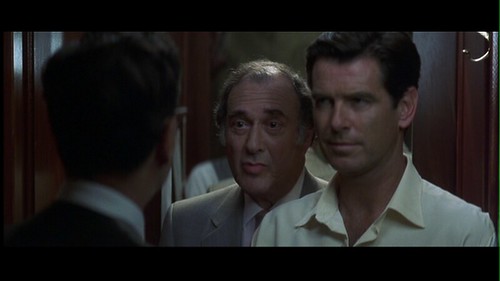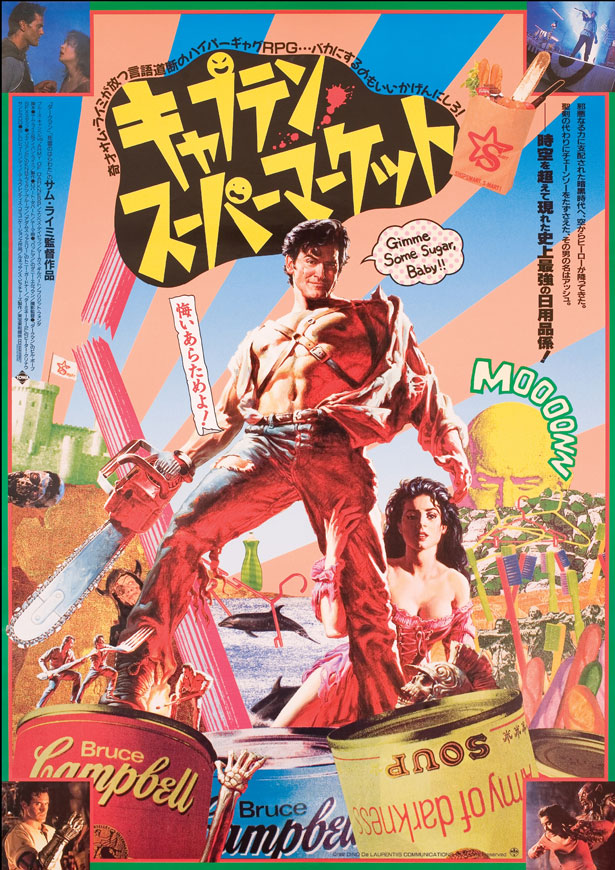The extra 'G' is but one of the things in
Aggar, yet another addition in Anant Mahadevan's exploration of the thriller form as a dentist's appointment. Mithoon Sharma's songs offer some relief best sought in aural form, separated from the trite tapestry of images and moments spun to their cadences. The Nose was the original choice for music director and one wishes that he had stayed on to offer more nostrills. The premise seems oddly familiar to things in
Asylum, a novel by Patrick McGrath that was adapted to film in 2005; but enough has happened to it to save it from indictment.
What we have is the unholy triangle of a shrink, his wife and his patient played respectively by the talented Shreyas Talpade, the perennially irritated Udita Goswami and the chaetophorous tragic Tusshar Kapoor (two S, two O, where will my career go?). The casting choices alone offer enough hints should you wish to try and crack the narrative twists and save yourself time.
The destruction of promise starts off early. The opening credits are revealed against a background of smoke through blinds-like black bars running outward left to right and right to left. These are intercut with fast-cut shots of the characters. The surprise at seeing something reasonably competent is short-lived as soon as the the main title pops up in a tacky not-quite-haematic red font. We are then treated to a host of tropes that are permanent fixtures in the quivers of incompetent filmmaking in Bollywood: a languid pace, misconceptions about the purpose of editing and, the most common one of them all, earnest hamming.
This is a world where everyone has a Nokia cellphone, uses only Lenovos and drives white Toyotas. If you look at the call history in Udita Goswami's cellphone, you'll know that this movie is set in December 2006. If you look carefully at the cellphone numbers that figure in the movie, you can also nail the twist before it nails you.
This brings us to what each performer got out of this film. Tusshar gets to dance to a Mithoon ditty with a George Michael poster in the background; he riffs with Shreyas Talpade about windows (the opening/shutting kind not the perpetually crashing kind); he gets to compete with Celina Jaitley's bikini/violin shtick by hamming it on the flute. He even gets to pay tribute to Daler Mehndi by showing up in triple form in ki bin tere. He gets a combination of IPC 305 and 306 (aiding a suicide -- go figure!) tossed at him. Meanwhile, Udita Goswami pronounces vinyls as wii-naails. The two are also the participants in the obligatory fully-clothed sniff-a-thon that passes off as the family-friendly desii steamy sequence. The film also attempts a new record in information hiding by delaying the occasion when we actually find what the name of Udita Goswami's character is. She also ends up notching another record for the film when she spits the F-word, in uncensored fashion, at Tusshar Kapoor (the line, dear reader, is I f*cking hate you!): more proof that the censor board had nodded off in boredom. What of Shreyas Talpade? He gets to mouth bits of deep zen like अब अगर दुनिया को पीठ दिखाओगे, आर्यन, तो दुनिया भी तुम्हें पीठ दिखायेगी (translation: if you turn your back to the world, the world will turn its back to you; alternative translation: if you back the world, the world will back you; how's that for back-to-back alternatives?) and ख़ुदा नहीं बस थोड़ा ख़ुदगर्ज़ हूँ (translation: I ain't God, I'm just a bit selfish; selfish? Fish. Ichthyus. Jesus. But ... that means he's the Son Of God and hence, by definition of the Trinity, God. O Theology!).
Special mention must be made of the annoying character serving up the obligatory comic interludes that should have died several years ago. This character is responsible for groan-inducing utterances like इस route की सभी लाइनें मस्त हैं and जिसे मैं अपना cyrus समझता था वो बाजूवाले का virus निकला.
And what of the subtitles? Rest assured, dear reader. The gems continue to inundate the ticker; whether they are products of a cogent mind playing a joke in glee or outpourings of incompetent putzes on the payroll. Consider as a sample the subtitle "for those who don't believe in court?" which accompanies the line "for those who don't believe in God?" This is either a hint at a subtext about a legal system with its roots in a code of morality motivated by religious beliefs or the result of bad hearing.
It's all about a 200 crore company and a 50 crore insurance policy, but one doubts that anyone really cares. After all, when the end credits roll, the cast is seen dancing in a video for the title song. So much for believable characters.







